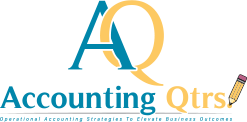Securing Success: How Accounting Unlocks Risk Management Solutions

Securing Success: How Accounting Unlocks Risk Management Solutions
As we step into the dynamic realm of business, we are met with an array of challenges that resonate with us all. Your presence here signifies your quest for strategies to conquer these uncertainties and propel your organization toward triumph. Regardless of your organization’s size, we are committed to addressing your concerns comprehensively. Accounting practices, in all their intricacies, serve as an excellent point of departure for this journey. So, without further ado, let’s embark on this blog and unveil the mystery of how accounting serves as the key to unlocking effective risk management solutions. Grab a cup of coffee, settle in, and let’s explore together!
How are Accounting and Risk Management Connected?
The role of risk management involves monitoring, identifying, controlling, and resolving risks to ensure the success of each of an organization’s operations. Almost all organizations, whether they are small startups or giant industries, will face these risks. In case any of these risks go unchecked, it could potentially harm the organization. Some large-scale risks can ultimately result in financial costs, such as IT security and over-reliance on a specific vendor.
Now, you might be wondering how much money these risks can cost you. In these circumstances, accounting helps you identify these risks. How? By visualizing how different products, events, and other resources can affect your financial health. These statistics provide practical information for your benefit. Financial analysis offers possible solutions for risk management by enabling faster risk identification and providing the means to navigate them. It also uncovers improved opportunities.
Risk Management Accounting Factors
Accounting data that are collected from a variety of different sources can be stored, tracked, and monitored within a holistic accounting system. From the accounting perspective, you have the ability to identify factors such as initiatives, products, events, and individuals that are causing a decrease in return on investment.
Starting from this point, implementing corrective actions becomes easier since you’re not guessing at what’s going on. The financial figures and trends related to your initiatives offer precise insights into their effectiveness, indicating what’s working and what isn’t.
No matter the industry or company size, common risk factors include:
• Financial Risk
A few examples include financial instability resulting from project failures, increasing expenses, and poor cash flow.
• Human Factors
Poor decision-making, errors, ineffective recruitment strategies, unproductive employees, and staff turnover are examples of how human factors can contribute to increased operational costs.
• Environment
Environmental changes, such as hurricanes and floods, have the potential to escalate costs related to both damage and time, particularly when an organization is unprepared. Moreover, reduced business and cloud-based risks should also be taken into account.
• Products Issues/ Equipment
Instances of work disruption and cost escalation can result from product delays or errors, equipment failures, and inadequate supplies.
• Control Your Risks with Accounting Qtrs
Risks are manageable through the identification of your organization’s specific risks. Using accounting technology like Accounting Qtrs enables you to pinpoint these distinct risks and track them through automated reporting and alerts.
Final Thoughts
The interplay between accounting and risk management is evident in their ability to identify, assess, and address various organizational risks. Regardless of the size or industry, these risks, including financial, human, environmental, and product-related factors, can be effectively. Embracing accounting technology empowers organizations to secure success by proactively mitigating risks and optimizing opportunities.

